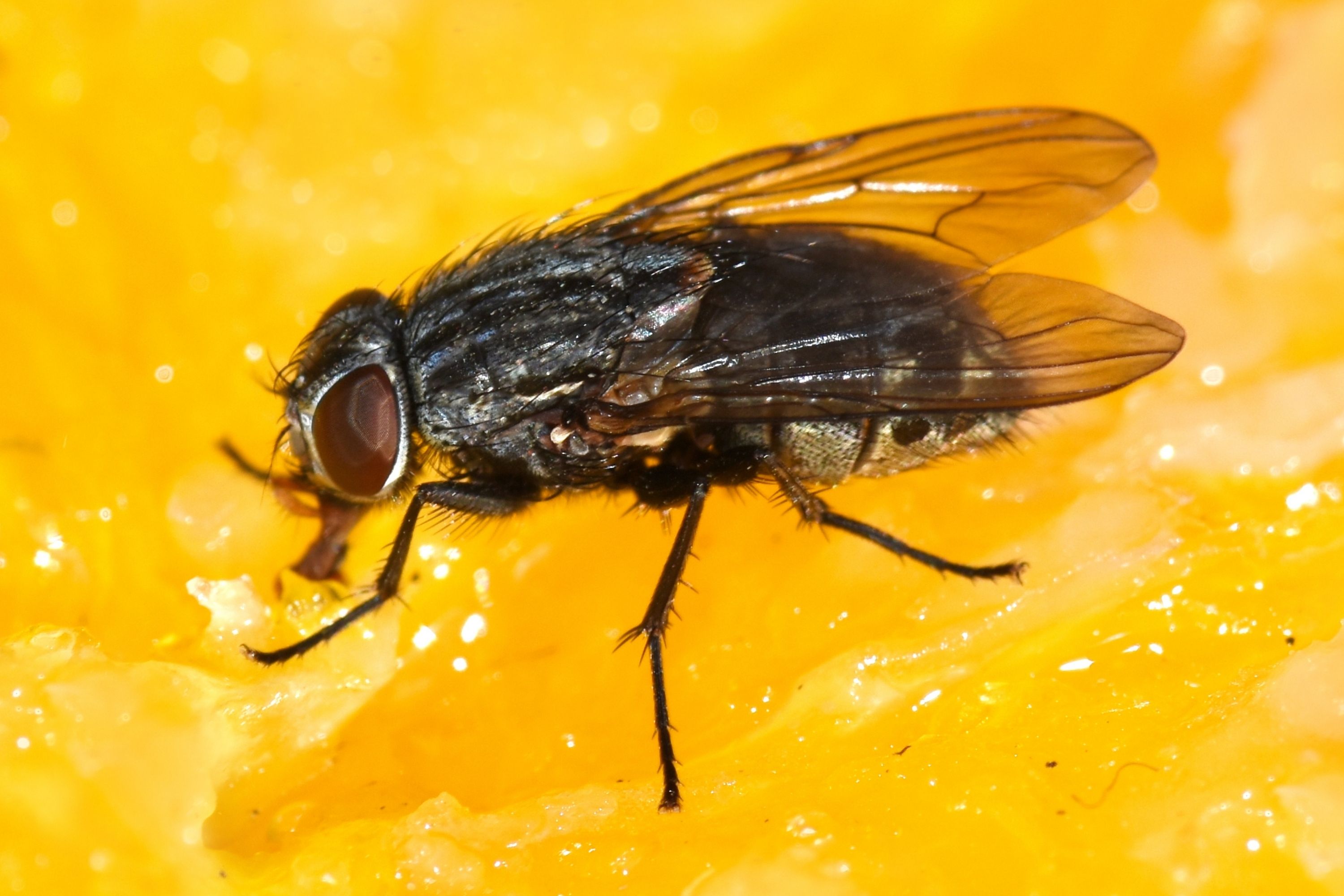Common cluster fly
(Pollenia rudis)

Description
Pollenia rudis, the common cluster fly, is a species of fly in the family Polleniidae. Pollenia rudis is also known as the attic fly, the loft fly, pollenie du lombric and the buckwheat fly. During the autumn and winter months, Pollenia rudis can be found overwintering inside attics or lofts. This sluggish species can be found “clustering” near the interior windows of a warm structure. This species is widely distributed throughout the United States, Canada, and Europe and is considered a pest species in structures. P. rudis can be found wherever their host earthworm, the Allolobophora genera (also known by the genus name: Aporrectodea), occurs. These earthworms are typically located in well-drained, silt-loam soil with grass cover. During the summer, P. rudis can be found in fields and open areas. It is only when there is a sudden drop in temperature that the cluster fly shifts to the interior of structures, holes in trees, loose bark, or other crevices and cavities. The common name "cluster fly" was derived from the clustering behavior in adults of this species in attics and lofts. The common name, "buckwheat fly", is derived from the odor of buckwheat honey the species gives off when they are crushed. Pollenia rudis was first documented by Johan Christian Fabricius in 1794. At the time, Fabricius listed the genera and species as Musca rudis. This taxonomy was changed in 1830 by André Jean Baptiste Robineau-Desvoidy to Pollenia rudis. The change of genus to Pollenia (suggested by the pollen of flowers) occurred for Muscids having, among other features, the thorax covered with "down-like clothing". P. rudis has also been previously described under the name of Musca familiaris in 1869 by Dr. T.W. Harris. The cluster fly is a European species and the date of its introduction into the United States is not known. This species gained particular attention in the United States when Dr. W. H. Dall, of the Smithsonian Institution, published an article in the Proceedings of the U.S. National Museum for 1882. Dr. Dall secured specimens of P. rudis for identification. Dr. Dall also documented the species appearance in Geneva, NY thirty years prior to his publication P. rudis may have been introduced to the United States upon slow sailing vessels in the cooler months of the year that traveled from Europe.
Taxonomic tree:







